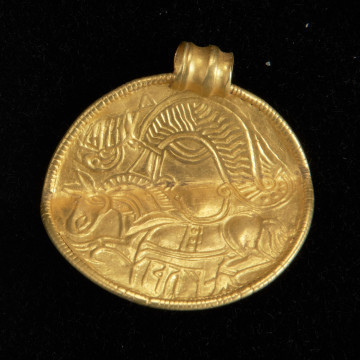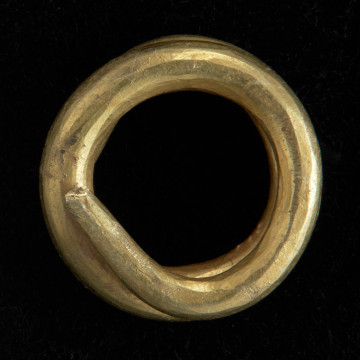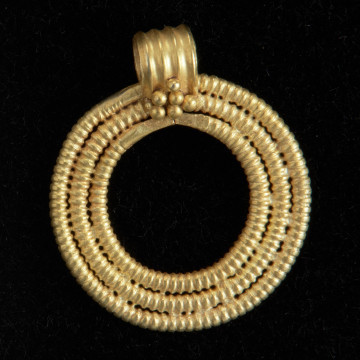
Bracteate
National Museum in Szczecin
Part of the collection: Antiquity
A characteristic feature of bracteates is the lack of a reverse – they are single-sided. The presented bracteate depicts a strongly stylized image of a rider on a horse. Between the rider’s head, and the horse’s head there is a runic inscription ō t a, and under the horse’s head, there is a swastika. The bracteate is decorated around the rim with three circles imitating a beaded wire. Scandinavian bracteates are usually decorated with stylized depictions of human heads and whole figures, as well as images of animals. The most common specimens decorated with the figure of a man on a horse are classified as a separate type (so-called type C). Only about 10 % of the bracteates have short runic inscriptions, most of them have only symbols, such as the swastika. The image of the rider on horseback refers to the depictions of Roman emperors, which are known from coins and medallions discovered in central and northern Europe. They are dated to the second half of the 4th and early 5th centuries. According to another interpretation, the rider on horseback is Odin (Wodan) riding Sleipnir. An identical bracteate was discovered in 2010 in Søtoftegård (West Zealand). Analogues items are also known from southern Sweden and Bornholm. Scandinavian gold bracteates with runic inscriptions represent a unique category of monuments. Another example is a specimen from Wapno in Wągrowiec poviat, with sabar inscription.
Bartłomiej Rogalski
Author / creator
Dimensions
cały obiekt:
Object type
exchaneg media; money; coin
Technique
forming; punching
Material
gold
Creation / finding place
Owner
Muzeum Narodowe w Szczecinie
Identification number
Location / status

National Museum in Szczecin

National Museum in Szczecin

National Museum in Szczecin
DISCOVER this TOPIC
Museum of King Jan III's Palace at Wilanów
DISCOVER this PATH
Educational path